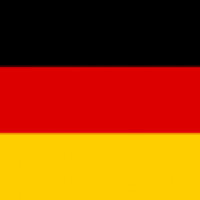Summary:
A German university has developed a bridge tool for the production of extruded profiles with varying cross-sections, especially for the lightweight material aluminum. The university is interested in a cooperation in the framework of a license or a research cooperation agreement in order to advance the technology from TRL 6 onward.
Description:
The extrusion forming process enables high degrees of forming to be achieved in just a single process step as well as the production of almost unlimited varieties of possible profile cross-sections. Extrusion is an essential manufacturing process, especially for the lightweight material aluminum. In conventional extrusion processes, however, only rigid forming tools are used that can only form constant profile cross-sections along the length of a profile. Since the design of components and parts is carried out according to the highest expected stress, this does not occur uniformly over their length in real technical use. Thus, locally oversized profile areas inevitably result in the conventional process.
To solve the above-mentioned problems, scientists at a German university have developed a bridge tool for the production of extruded profiles with varying cross-sections resulting in a reduction of oversized profile sections.
This is achieved by integrating movable segments in the tool, which are moved during the forming process by an externally mounted drive mechanism. By moving the segments vertically to the direction of extrusion, the shaping gap in the tool and consequently the local wall thickness of the hollow section is either reduced or increased. The maximum wall thickness change achievable so far was 1.2 mm. With an initial wall thickness of 4.5mm, this was reduced to 3.3mm, which corresponds to a reduction of approximately 27%.
This innovative technology achieves savings in the use of materials and the weight of profiles. These savings reduce fuel consumption and exhaust emissions, especially in weight-sensitive applications such as transportation.
The university is interested in finding a partner under a license agreement. A future partner would thus hold the right to use the technology in return for a fee or a share of royalties. Patent purchase is possible as well. The university is also open to agree on a research cooperation agreement that aims at the joint continued development of the technology.
Type (e.g. company, R&D institution…), field of industry and Role of Partner Sought:
The university is looking for a partner to license the technology presented herein. Ideally, the partner is active in the automotive or aerospace industry (including its suppliers). The partnership would be conducted under a license agreement. A future cooperation partner would thus hold the right to use the technology (e.g. for the development and production of new forms of wagons) in return for a fee or a share of royalties.
Alternatively, the university is also looking for partners to jointly further develop the technology under a research cooperation agreement. Partners for this type of cooperation could be SMEs, industry-size companies or research institutes (university and non-university).
Stage of Development:
Prototype available for demonstration
Comments Regarding Stage of Development:
TRL 6 - Prototype system
IPR Status:
Patent(s) applied for but not yet granted
External code:
TODE20201007002








